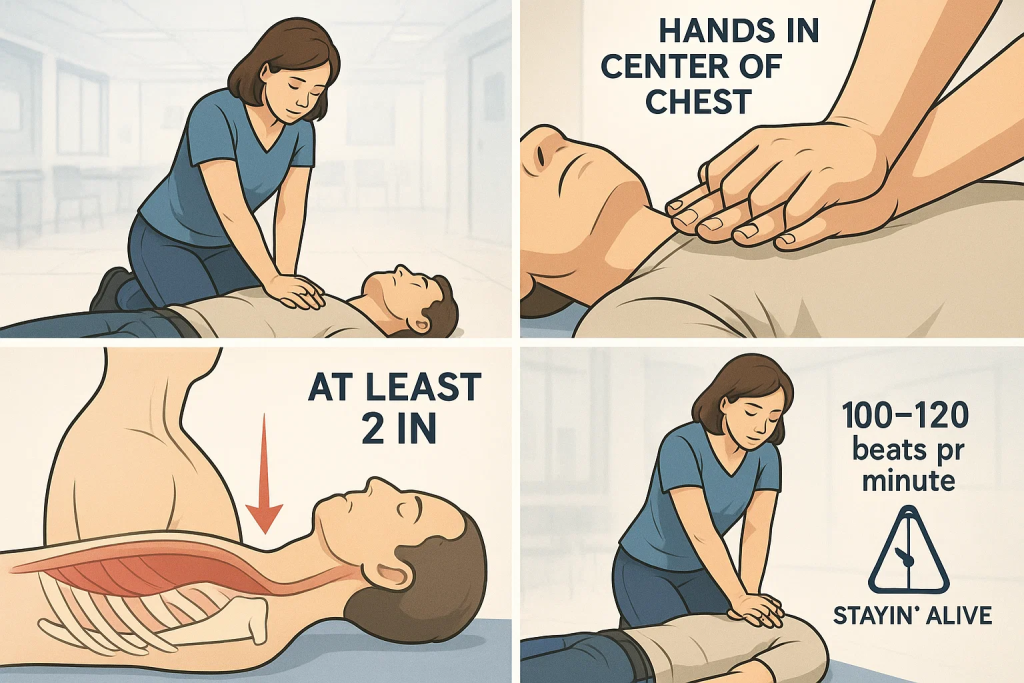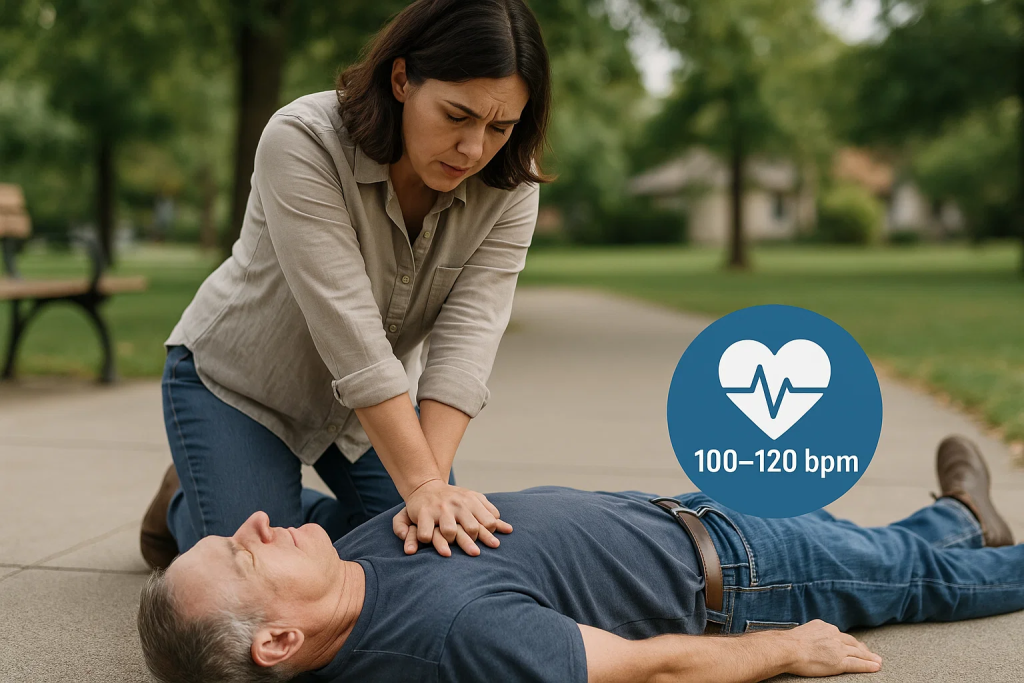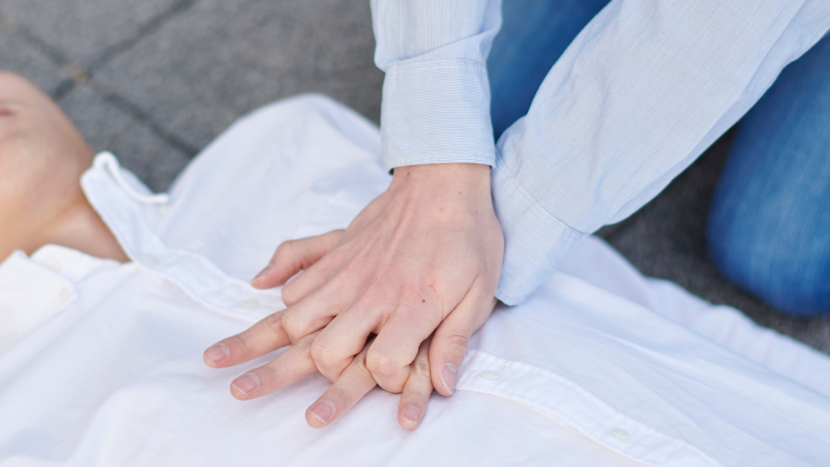In a moment of crisis, your actions could make the difference between life and death. That’s the power of CPR. Cardiopulmonary Resuscitation (CPR) is a crucial, potentially life-saving emergency procedure used when someone’s breathing or heartbeat has stopped. Whether you’re a trained professional or a complete beginner, learning how to perform CPR empowers you to take control in emergencies. This in-depth guide walks you through exactly how to perform CPR, including the latest 2025 guidelines, CPR steps for adults, children, and infants, and helpful resources to deepen your understanding.
Why Learning CPR is Crucial
According to the American Heart Association (AHA), nearly 350,000 cardiac arrests occur outside of hospitals in the U.S. each year. The numbers in India are also alarming: a study in The Lancet reports that over 4,280 Indians die daily due to sudden cardiac arrest, often before reaching a hospital.
Learning CPR can double or even triple survival chances. But only about 40% of people receive bystander CPR before emergency help arrives.
This is not just a skill for doctors or EMTs—this is a skill for everyone.
When Should You Perform CPR?
Start CPR if the person:
- Is unresponsive and not waking up when tapped or spoken to
- Is not breathing or only gasping
- Has no pulse (if you’re trained to check for one)
Remember the acronym C-A-B: Circulation – Airway – Breathing
CPR Step-by-Step Guide (Adult)
Step 1: Ensure Scene Safety
Look around and make sure it’s safe—for both you and the victim. Check for any hazards like traffic, fire, falling objects, or electrical danger.
Step 2: Check for Responsiveness
Tap their shoulders and loudly ask,
“Are you okay?” If there is no response, shout for help.
Step 3: Call Emergency Services
- Call 911 (India Emergency Number: 112 or your local emergency number).
- Ask a bystander to fetch an AED (Automated External Defibrillator).
You can also put the emergency dispatcher on speakerphone—they can guide you through CPR.
Step 4: Open the Airway
- Tilt the victim’s head back slightly.
- Lift the chin to open the airway.
Step 5: Check Breathing
- Look for normal breathing for no more than 10 seconds.
- If not breathing or only gasping, start chest compressions.
How to Do Chest Compressions

- Kneel beside the person.
- Place the heel of one hand in the center of the chest, between the nipples.
- Place your other hand on top and interlock fingers.
- Keep your elbows straight and shoulders above your hands.
- Push hard and fast, compressing the chest at least 2 inches deep.
- Maintain a rate of 100–120 compressions per minute (same beat as Stayin’ Alive by the Bee Gees).
Rescue Breaths (If You’re Trained)
- After 30 compressions, give 2 breaths.
- Pinch the nose, cover their mouth with yours to create a seal, and give a breath for 1 second.
- Watch for the chest to rise.
- If it doesn’t, re-tilt the head and try again.
Continue the cycle: 30 compressions + 2 breaths until help arrives or an AED is available.
CPR for Children (Ages 1–12)

- Use one hand for chest compressions.
- Compression depth: about 2 inches.
- Still follow a 30:2 ratio (compressions to breaths).
- Be gentle but firm—children’s chests are more flexible.
CPR for Infants (Under 1 Year)
- Use 2 fingers in the center of the chest, just below the nipple line.
- Push down about 1.5 inches.
- Provide gentle puffs of air, covering the baby’s nose and mouth with your mouth.
- Keep the 30 compressions to 2 breaths ratio.
Using an AED (Automated External Defibrillator)
If available, use an AED immediately after calling for help. AEDs are designed for public use and guide you through the process with voice prompts.
Steps:
- Turn it on.
- Expose the chest and attach pads as shown in the diagram (or on-device).
- Ensure nobody is touching the victim.
- Let the AED analyze the rhythm.
- If a shock is advised, press the shock button.
- Immediately resume CPR for 2 minutes before the AED reassesses.
- Even if you’re not trained, AEDs are built to be foolproof—just follow the instructions.
Hands-Only CPR: When to Use It

If you’re not trained in rescue breaths, you can still perform hands-only CPR:
- Just do chest compressions at 100–120 per minute.
- Push hard and fast in the center of the chest.
- Don’t worry about breaths—something is better than nothing.
When to Stop CPR
You should stop performing CPR only under specific circumstances to ensure the best chance of survival for the individual. CPR can be discontinued when the person begins to breathe normally on their own, indicating that their heart and lungs are functioning again. It is also appropriate to stop when emergency medical services (EMS) arrive and take over the care or when an automated external defibrillator (AED) is used and instructs you to stop. In some cases, you may have to stop if you become physically exhausted and are unable to continue. However, it is crucial never to stop CPR too early—every minute is vital in increasing the person’s chances of survival.
Final Thoughts
CPR may seem intimidating, but with a little knowledge and practice, you could be someone’s hero. Whether you’re a parent, teacher, student, or just a concerned citizen, learning CPR is a lifelong skill that gives you the confidence to act in a crisis.
Bonus Tip:
- India Emergency: 112
- US/Canada: 911
- Poison Control (India): 1800 11 6119
- Red Cross Helpline: 1-800-RED-CROSS




